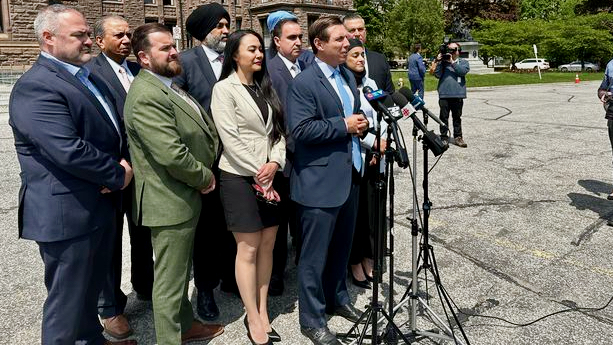After many weeks of chatter and rumours, it was officially announced that Brampton, Mississauga and Caledon would each become single-tier municipalities.
While speaking alongside Mayors Patrick Brown and Bonnie Crombie, Municipal Affairs Minister Steve Clark said that Peel Region currently has 1.5 million inhabitants and that in the next two decades, the region is projected to grow by half a million more people and that those people will need homes to be built.
This new bill, which has been named the Hazel McCallion Act, will allow the municipalities to grow more efficiently to allow this projected expansion, Clark said.
The dissolution of the Peel Region has left many people scratching their heads and wondering how this will affect infrastructure and services in the region.
Clark said yesterday during a news conference he would be appointing a transition board to help iron out the detail of the split. He also said, however, that he was confident that this could be an efficient and amicable transition between municipalities.
The public continues to be mostly in the dark about how this transition is going to affect workers and services from the Peel Region.
Alexander Wray, a PhD candidate from Western University with a specialty in Urban Planning, said that regions are effective ways to deliver services which may not be as easily available to municipalities.
He said the regional form of governance is essentially service delivery designed to help coordinate social service program delivery, he said.
This raises questions about how the municipalities are going to supply essential services such as police, water and waste management.
Police services will be a particularly contentious subject as the new head offices are currently located in Mississauga. Peel Region Paramedics are based in Brampton.
However, Wray said that these soft services may not be the hardest thing to navigate.
“It’s just a matter of money and transferring resources and getting different entities set up in between. Because you’re dealing with three municipal administrations that are already existing, it’s not gonna be as painful as, for example, if Toronto split up into six,” he said.
Wray said that the more complex part of rethinking an urban area is the hard infrastructure.
“The biggest issue that’s gonna come up is linear infrastructure, the sewer pipes running underground and the water mains and, the sewage treatment plants and the water inflow plants, all those need some sort of entity or some sort of agreement to pay for those services in the capital obligations associated with them,” he said.
Although all three mayors have said that this split would be amicable and not result in higher taxation, there has been some tension about how Mississauga and Brampton will divide up services with headquarters in Mississauga.

